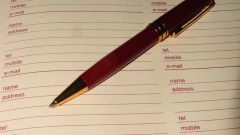Instruction
1
Read the basic documents that will help you draft transactions. These include: chart of accounts and various accounting regulations. Recent documents are reissued constantly, so it is advisable to always have latest version.
2
Learn the concept of accounting. It is the basic unit of information storage in various operations of the enterprise. Account accounting allow you to reflect the relationship and Ungroup the property at the location, composition, sources of formation and economic operations according to various characteristics. Each transaction type has a corresponding account with the serial number matching the items on the balance sheet and with credit and debit.
3
Define operations for its relation to active or passive account. Active accounts are intended to reflect the property's structure, location and availability and are located in the assets side of the balance. Liability accounts reflect the sources of formation of property and placed on the liabilities.
4
Write operation in credit or debit side of the account. For active accounts to the debit of the situation are increasing, and credit – reduction of property or money. For passive accounts – on the contrary.
5
Make a journal entry to reflect the transaction using double entry. The records should reflect the movement of assets and liabilities in the accounts. For example, consider a situation when cash withdrawn from the accounts of the company and are defined in the cashier. In this case, take account 50 "cash" and the account 51 "Settlement account". The first will be reflected on the debit side, because it increased the amount of money and the second loan, as its amount has decreased. If you are paying wages out of the register, the account 50 is recorded in the credit, and the bill 70 ("Settlements with employees on remuneration of labor") is in debit.






